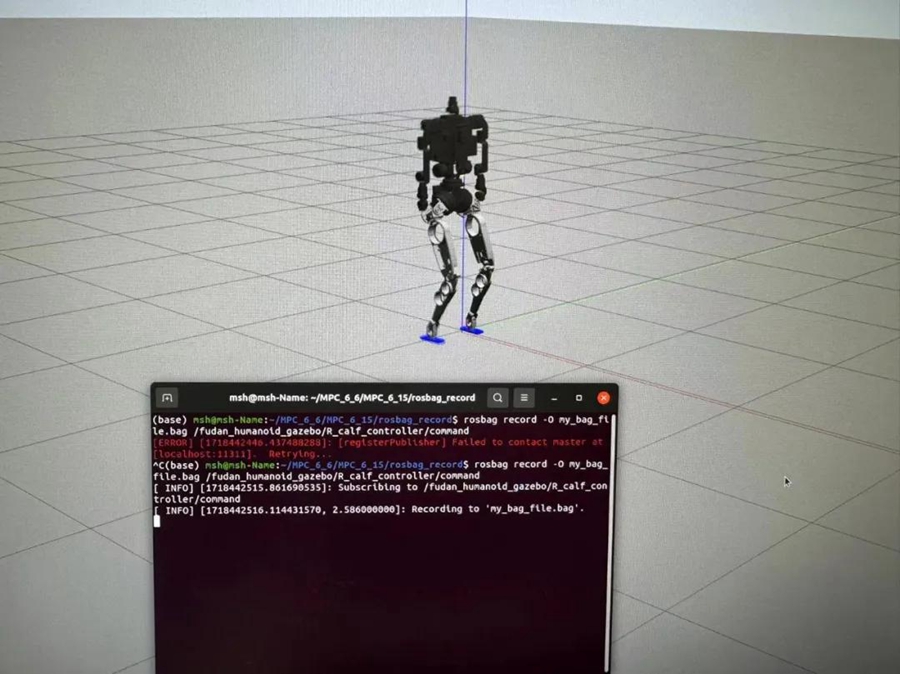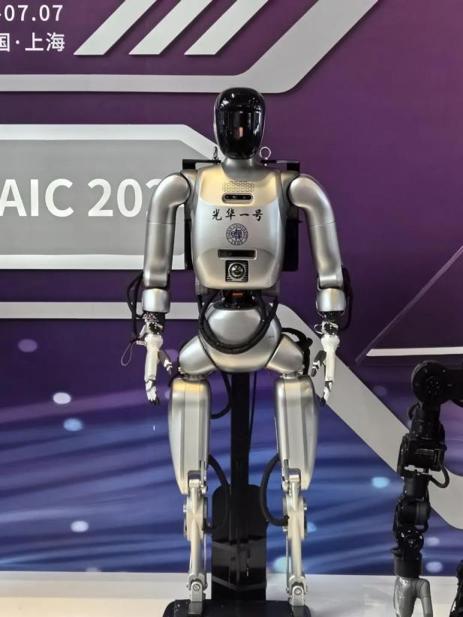Fudan University unveils emotional humanoid caregiving robot at WAIC

Guanghua No 1 is described as a highly emotionally responsive, flexible, and sophisticated humanoid robot, which can not only walk but also display facial expressions. [Photo provided to chinadaily.com.cn]
Fudan University in Shanghai unveiled an emotional humanoid robot designed to provide elderly care and healthcare services at the 2024 World Artificial Intelligence Conference on July 4.
Standing 165 cm tall and weighing 62 kg, the Guanghua No 1 is the only university-developed humanoid robot among the 18 humanoid robots showcased at this year's WAIC.
Guanghua No 1 is described as a highly emotionally responsive, flexible, and sophisticated humanoid robot that can not only walk but also display facial expressions.
It boasts 45 intelligent joints with a hierarchical generative embodied brain model, enabling it to smoothly swing its arms and walk upright.
Gan Zhongxue, deputy dean of the Academy for Engineering & Technology of Fudan University, emphasized the robot's focus on meeting the growing demands of China's aging population.
"Our market research indicated that elderly care and health services are the most pressing areas for humanoid robot application," Gan explained, noting that their vision is to create a "health companion" capable of providing personalized and empathetic care for the elderly.
The robot's development was driven by the need for emotional engagement in elderly care. "Providing care with an emotionless, mechanical entity would fail to offer the warmth akin to that of a family member. Genuine care necessitates emotional intelligence," Gan said.
One of its most striking features is the ability to display four fundamental emotions—happiness, anger, sadness, and joy—oon its facial display screen, enabling more vivid interactions.

Fudan University unveils an emotional humanoid robot designed to provide elderly care and healthcare services at the 2024 World Artificial Intelligence Conference. [Photo provided to chinadaily.com.cn]
The robot's emotional intelligence is inspired by a brain-inspired motivation and dopamine reward mechanism, utilizing multilevel coordinated incentive algorithms to generate humanlike perceptions and behaviors. This approach allows Guanghua No 1 to interpret human expressions and generate appropriate emotional responses.
The project of Guanghua No 1, which has been in development for over two years, brings together experts from diverse fields, including mechanics, biology, engineering, computer science, and big data.
The team plans to release a trial version by the end of this year, with small-scale industrial promotion slated for next year.
They are currently conducting extensive tests in several provinces, including Jiangsu and Zhejiang, to refine the robot's care functions, ensuring safe, precise, and gentle movements for essential tasks such as assisting elderly individuals out of bed or accompanying them to the bathroom.
This year's WAIC, running from July 4 to 7, stands as a premier platform for deliberating on the latest breakthroughs, hurdles, and prospects in artificial intelligence.